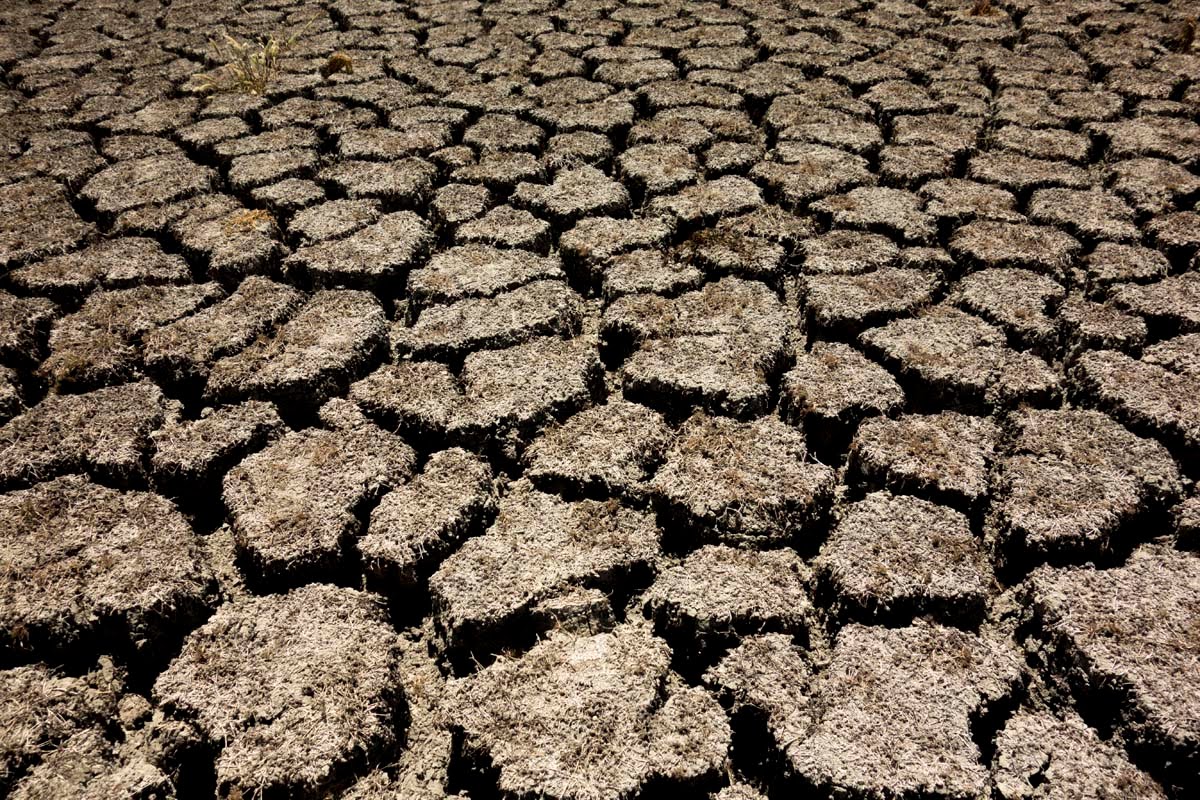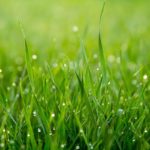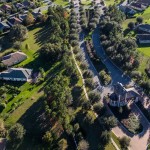
When you hear the word “drought” in the context of colleges, you’re bound to think of a football team’s winless streak. But for some college campuses in the U.S., the word “drought” carries much more dire implications.
From California to Florida, college campuses are feeling the effects of a parched environment. To find the thirstiest campuses — we’re not talking booze here — LawnStarter analyzed data from the National Drought Monitor and matched it with the list of colleges that have NCAA Division I football programs. We then whittled down the number of colleges to only those in places that are experiencing exceptional or extreme drought conditions.
In compiling our ranking, we dinged colleges in exceptional-drought regions more than those in extreme-drought regions. Why? Because an exceptional drought is the worst kind of drought, while an extreme drought is the second worst.
Our other ranking factor: the total acreage of a college campus. The more land, the higher the ranking; presumably, a bigger campus needs more water for grass and plants than a smaller campus does.
UCLA’s Powell Library
Photo: Flickr/CampusGrotto
Dealing With Drought
Encompassing more than 400 acres and sitting in an exceptional-drought zone, UCLA tops our list of the most drought-stricken college campuses in the country.
Reacting to the statewide strain on the water supply, the University of California system has instructed UCLA and its other campuses to cut water use 20 percent by 2020 compared with 2000-01 levels. UCLA already has reduced per-capita water use by 7.6 percent since 2000.
UCLA continues to add drought-tolerant landscaping, install low-flow plumbing fixtures and undertake other water conservation measures. Another water-saving move made by UCLA: removing the grass at the nearly 8-acre intramural field and replacing it with AstroTurf. That’s expected to conserve 6.4 million gallons of water a year.
“Artificial turf was a perfect solution for this field, with its heavy use and location on top of a parking structure,” says Nurit Katz, chief sustainability officer at UCLA. “Artificial turf has been an important complementary strategy to our main turf-reduction focus on drought-tolerant landscaping projects, which support local biodiversity.”
The intramural field at UCLA
Photo: Ohno Construction Co.
Scarce Supply
On any given workday, about 70,000 students, faculty and staff are on the UCLA campus, essentially transforming the school into a water-dependent city.
“Water scarcity is likely to be one of the most severe consequences of population growth and climate change, and Los Angeles is particularly vulnerable because of our arid climate and reliance on imported water,” UCLA Chancellor Gene Block says.
Relying on grass replacement, drought-tolerant landscaping and other projects, UCLA aims to save more than 11 million gallons of water each year.
“Grass is much more water-intensive, and while we don’t want to get rid of all of it, we’re systematically moving away from it for ornamental areas,” Katz says. “It’s part of our response to the drought and part of our long-term water action plan.”
Here is LawnStarter’s ranking of the 12 major college campuses in the U.S. that face the worst drought-created water woes.
1. UCLA
Location: Los Angeles, CA
Drought status as of August 25, 2015: Exceptional
Campus size: 419 acres
Fall 2014 enrollment: 43,239
2. Fresno State University
Location: Fresno, CA
Drought status as of August 25, 2015: Exceptional
Campus size: 363 acres
Fall 2014 enrollment: 23,179
3. University of Nevada
Location: Reno, NV
Drought status as of August 25, 2015: Exceptional
Campus size: 255 acres
Fall 2014 enrollment: 19,934
4. University of Southern California (USC)
Location: Los Angeles, CA
Drought status as of August 25, 2015: Exceptional
Campus size: 226 acres
Fall 2014 enrollment: 43,000
5. Stanford University
Location: Palo Alto, CA
Drought status as of August 25, 2015: Extreme
Campus size: 8,180 acres
Fall 2014 enrollment: 16,795
6. Washington State University
Location: Pullman, WA
Drought status as of August 25, 2015: Extreme
Campus size: 1,720 acres
Fall 2014 enrollment: 19,756 (Pullman campus only)
7. University of Idaho
Location: Moscow, ID
Drought status as of August 25, 2015: Extreme
Campus size: 1,450 acres
Fall 2014 enrollment: 10,474 (Moscow campus only)
8. University of California
Location: Berkeley, CA
Drought status as of August 25, 2015: Extreme
Campus size: 1,232 acres
Fall 2014 enrollment: 37,581
9. Florida International University
Location: Miami, FL
Drought status as of August 25, 2015: Extreme
Campus size: 344 acres
Fall 2014 enrollment: 54,099
10. San Diego State University
Location: San Diego, CA
Drought status as of August 25, 2015: Extreme
Campus size: 283 acres
Fall 2014 enrollment: 29,136 (San Diego campus only)
LawnStarter provides convenient and quality lawn care services in SoCal. Visit our San Diego page to book now!
11. University of Miami
Location: Coral Gables, FL
Drought status as of August 25, 2015: Extreme
Campus size: 239 acres
Fall 2014 enrollment: 16,188
12. San Jose State University
Location: San Jose, CA
Drought status as of August 25, 2015: Extreme
Campus size: 153 acres
Fall 2014 enrollment: 32,713
LawnStarter connects homeowners to local lawn care professionals via an easy-to-use mobile app.
Data sources
http://droughtmonitor.unl.edu/
https://www.admissions.ucla.edu/campusprofile.htm
http://colleges.usnews.rankingsandreviews.com/best-colleges/csu-fresno-1147
http://www.fresnostate.edu/academics/oie/data/
http://colleges.usnews.rankingsandreviews.com/best-colleges/university-of-nevada-2568
http://www.unr.edu/nevada-today/news/2014/fall-2014-enrollment
http://colleges.usnews.rankingsandreviews.com/best-colleges/usc-1328
http://about.usc.edu/facts/
http://facts.stanford.edu/about/lands
http://ucomm.stanford.edu/cds/2014#enrollment
http://colleges.usnews.rankingsandreviews.com/best-colleges/washington-state-3800
https://wsu.edu/about/facts/
https://www.berkeley.edu/about/fact.shtml
http://opa.berkeley.edu/uc-berkeley-fall-enrollment-data
http://colleges.usnews.rankingsandreviews.com/best-colleges/fiu-9635
http://opir.fiu.edu/quickfacts.htm#univ-headcount
http://colleges.usnews.rankingsandreviews.com/best-colleges/university-of-idaho-1626
http://www.uidaho.edu/about/fast-facts
http://colleges.usnews.rankingsandreviews.com/best-colleges/university-of-miami-1536
http://www.miami.edu/index.php/about_us/fast_facts/student_enrollment_–_fall_2014/
http://colleges.usnews.rankingsandreviews.com/best-colleges/fiu-9635
http://colleges.usnews.rankingsandreviews.com/best-colleges/sdsu-1151
http://arweb.sdsu.edu/es/hobsons/emails/enrollment-management/update144.html
http://www.sjsu.edu/about_sjsu/
http://www.iea.sjsu.edu/cognos/cgi-bin/cognos.cgi


















![8 Best Gardening Gloves of 2024 [Reviews]](https://www.lawnstarter.com/blog/wp-content/plugins/related-posts/static/thumbs/14.jpg)
